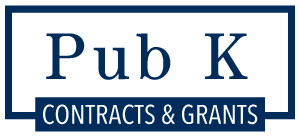Appeal seeking to reverse the agency’s conclusion that certain rental costs were unallowable is denied, where the agency properly concluded that a sale and leaseback had occurred, which limited the amount of reimbursement due the contractor to its normal costs of ownership, rather than the amount of rent paid. The board agreed that the lessor and lessee shared common control, given that the owners of the lessor served as members and officers of the board of the lessee.
Adams and Associates Inc. appealed the Department of Labor’s reduction to its reimbursable costs for the rental of its corporate headquarters. The contracting officer concluded these costs should be limited because of the connections among AAI, the original owner of the facility; the reorganized AAI, the current lessee; and Sierra Sky Properties LLC, the current owner. The CO concluded that a sale and leaseback had occurred and that Sierra Sky and AAI had issues of common control.
As background, Adams and Associates became a 100-percent employee-owned company through the implementation of an employee stock ownership plan (ESOP) with the company’s prior owners. Prior to the change, the original company shareholders owned the company’s headquarters building. In order to raise funds to support the acquisition of the stock of AAI from its former owners, AAI entered into a purchase agreement with Sierra Sky Properties LLC, by which AAI sold its headquarters building to Sierra. Under the purchase agreement, the parties agreed that Sierra would lease the building back to AAI.
This lease had a term of 10 years, commencing on the date that Sierra closed escrow and acquired fee simple title to the premises. Under the lease, AAI was obligated to pay rent, utilities, and property taxes, and to maintain the premises in good repair. AAI’s costs under the lease increased compared to the costs it incurred as the owner of the facility.
On the same date as the execution of the lease agreement, AAI became an ESOP corporation when the employees of AAI became the 100-percent owners of the corporation. The new president, vice president, and secretary of the board were the previous owners of AAI.
After the change in ownership, the Department of Labor awarded AAI a cost-reimbursement contract to run a Job Corps center. Under the contract, DOL is obligated to reimburse AAI for its allowable and allocable costs, including both direct and indirect costs. AAI submitted an indirect cost rate proposal for review and approval by DOL’s Cost Determination Division of its indirect cost rate for the calendar year 2012. AAI fully disclosed the formation of the ESOP and the sale and lease of the headquarters building as well as the impact of the transaction on the 2012 indirect rate.
DOL audited that proposal and accepted AAI’s rate of 7.41 percent. However, DOL challenged the rental costs for the headquarters building in the indirect cost rate proposal for 2013, on the basis of alleged common control between AAI and Sierra. A compromise was reached in order to resolve the issue quickly. However, DOL challenged the costs again for 2014, on the basis that they were the result of a sale and leaseback.
DOL’s cost evaluators determined that the costs to be included in AAI’s indirect cost pool, as related to its rental expenses for the headquarters building, should be limited to the prior costs of ownership of the headquarters building. AAI appealed that decision to the contracting officer, who disallowed the appellant’s claimed reimbursement.
AAI appealed, seeking $119,436 for the difference in the calculation of its indirect cost rate for 2014. AAI also disputed DOL’s failure to include Facilities Capital Cost of Money as an allowable cost in DOL’s computation of cost of ownership.
On appeal, AAI argued that its actual rental costs are fully allowable. In response, the agency argued that Sierra and AAI are under common control due to the membership of Sierra’s principals on AAI’s board and their roles as board officers. Due to this apparent common control, the agency concluded that the rental costs were limited to the amount AAI would have paid had it retained ownership, because a sale and leaseback had occurred.
Alternatively, the contractor argued that if the agency’s limitation prevails on the basis of common control, AAI should be entitled to an offset of $26,551 for facilities capital cost of money. The agency argued that this amount should be disallowed because the contractor did not specifically identify this cost in its cost proposals, but AAI maintained that this offset was not relevant under its view that rental costs are fully allowable and it has raised this in response to the agency’s recent assertion of common control as a basis for limiting payment.
In refuting the government’s assertion that a sale and leaseback occurred, AAI argued that the 100-percent employee-owned AAI is not the entity that previously owned the building or the entity that sold the facility to Sierra. AAI posited a material distinction between the contractor as a privately-held entity that sold the building and as a 100-percent employee-owned company that is leasing the building. According to the appellant, this distinction precludes a finding of a sale and leaseback. In response, the agency argued there was no material change in the company—one company was the contracting party, as there was no novation with the change in ownership.
The board agreed with the agency that a sale and leaseback had occurred. The board noted that the ESOP agreement became effective retroactively on January 1, 2012, while the building was sold on October 16, 2012, with the lease proviso. Even without considering the retroactive effective date of the ESOP agreement, the contractor owned the building throughout until it sold the building to Sierra and thereafter leased it. The board found this situation presented a sale and leaseback that triggered the limitations on allowability of AAI’s rental costs.
The board also found the agency reasonably concluded AAI and Sierra were under common control, given the involvement of the individuals serving as officers of the contractor as the ESOP became effective, serving on the board of directors and as officers of the contractor prior to the effective date and signing of the ESOP agreement, and as members of Sierra. Because the lessor and lessee are under common control, the allowable costs are defined by the normal costs of ownership, not the rental amount negotiated by AAI and Sierra.
Finally, the contractor argued that facilities capital cost of money is an allowable cost, not considered by the agency. In response, the agency argued that AAI is barred from such an allowance because, the contractor failed to specifically identify an amount in its cost proposals for this contract. The board agreed that the facilities capital cost of money was not relevant under the contractor’s theory of entitlement to its rental costs, before the agency determined that payment of actual rental costs was not appropriate. However, because the evidentiary record did not support any dollar figure for the related facilities capital cost of money, the board held it could not make an adjustment under the cost principles and regulations.
Adams and Associates is represented by Tiffinay Barker Pagni, General Counsel. The government is represented by Dennis A. Adelson and Peter J. Dickson, Office of the Solicitor, Department of Labor.




